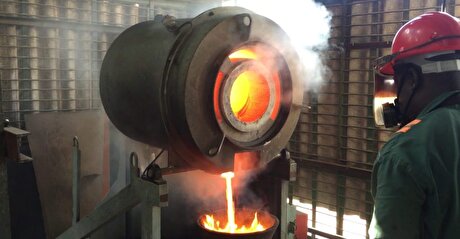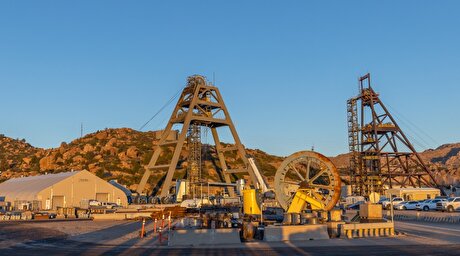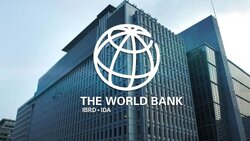
Annual GDP growth stands at 4.3%: SCI

According to the SCI, the figure was 3.5 percent excluding oil.
As reported by the center, based on the fixed prices in the Iranian year 1390 (ended on March 19, 2012), the country’s GDP stood at 7.569 quadrillion rials (about $27.725 billion) including the oil sector, and at 6.511 quadrillion rials (about $23.849 billion) excluding the oil sector in the past year, while the figures were 7.254 quadrillion rials (about $26.571 billion) and 6.289 quadrillion rials (about $23.036 billion), respectively, in 1399.
The SCI said that the agriculture sector experienced a negative growth of 3.7 percent, while the industries and mines sector grew six percent, and the services sector’s growth stood at 4.5 percent in the previous year.
According to the World Bank’s Global Economic Prospects (GEP) report released on June 7, Iranian economy is projected to grow by 3.7 percent in 2022, while the average global economic growth is seen at 2.9 percent in the said year.
“Output in the Islamic Republic of Iran is expected to grow by 3.7 percent in 2022, boosted by the waning of the pandemic and higher oil prices,” the bank said in the report.
The World Bank slashed its global growth forecast and warned that many countries could fall into recession as the economy slips into a period of stagflation reminiscent of the 1970s.
Global economic expansion is expected to drop to 2.9 percent this year from 5.7 percent in 2021 and 1.2 percentage points lower than the 4.1 percent predicted in January, the Washington-based bank said in the GEP report.
Back in April, in a report on Iran’s economy, the bank had revised up its forecast for Iran's gross domestic product (GDP) growth in 2022, expecting the country’s economy to grow 3.7 percent this year.
The entity had previously estimated the Islamic Republic’s GDP growth at 2.4 percent for 2022, in the GEP report released in January.
“Iran’s economy continues its gradual recovery that started in mid-2020, driven by the oil sector and services. However, water and energy shortages led to a contraction of the agriculture and industry sectors,” the recent report said.
A recovery in Iran’s oil and service sectors (11.7 and 6.5 percent growth, respectively) – following a return of global and domestic activity after the start of the pandemic – led to a five percent year on year growth in late 2021-early 2022, the bank said.
However, the agriculture sector contracted by 2.1 percent due to drought and energy blackouts. On the demand side, a 3.4 percent expansion in consumption drove GDP growth as activity returned closer to pre-pandemic levels. Imports growth (25.5 percent) outweighed the pick-up in exports (5.4 percent), and investment also declined (5.2 percent).
The bank puts Iran's economic growth at 4.1 percent in 2021 and about 3.4 percent in 2020.
World Bank which had estimated Iran's inflation rate at 40.1 percent for 2021 believes that it would fall to 37.6 percent this year and 34.8 percent next year.
“Higher projected oil prices in the outlook period and growth in oil export volumes considering the tighter global oil market are forecast to curb fiscal pressures. However, high expenditure growth due to increasing wage bills and pension spending is projected to keep the fiscal balance in a deficit of 3.8 percent of GDP in 2022-24.” the bank said in its report.
Source: Tehran Times


Zimbabwe labs overwhelmed as gold rally spurs exploration, miner says

Samarco gets court approval to exit bankruptcy proceedings

Cochilco maintains copper price forecast for 2025 and 2026

Gold price stays flat following July inflation data

Mosaic to sell Brazil potash mine in $27M deal amid tariff and demand pressures

HSBC sees silver benefiting from gold strength, lifts forecast

Glencore seeks $13 billion in incentives for Argentina copper projects

Hindustan Zinc to invest $438 million to build reprocessing plant

Samarco gets court approval to exit bankruptcy proceedings

Abcourt readies Sleeping Giant mill to pour first gold since 2014

Roshel, Swebor partner to produce ballistic-grade steel in Canada

EverMetal launches US-based critical metals recycling platform

Iron ore price dips on China blast furnace cuts, US trade restrictions

Afghanistan says China seeks its participation in Belt and Road Initiative

Gold price edges up as market awaits Fed minutes, Powell speech

Flash Metals USA advances critical minerals recovery plant in Texas

Glencore trader who led ill-fated battery recycling push to exit

US hikes steel, aluminum tariffs on imported wind turbines, cranes, railcars

US appeals court temporarily blocks land transfer for Resolution Copper

Abcourt readies Sleeping Giant mill to pour first gold since 2014

EverMetal launches US-based critical metals recycling platform

Iron ore price dips on China blast furnace cuts, US trade restrictions

Afghanistan says China seeks its participation in Belt and Road Initiative

Gold price edges up as market awaits Fed minutes, Powell speech

Flash Metals USA advances critical minerals recovery plant in Texas

Glencore trader who led ill-fated battery recycling push to exit

US hikes steel, aluminum tariffs on imported wind turbines, cranes, railcars

US appeals court temporarily blocks land transfer for Resolution Copper





















